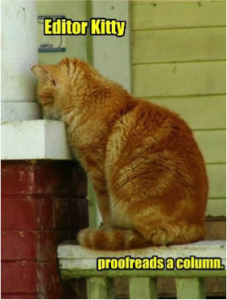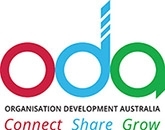 In regards to the Writing to Influence – Tool Time event on Wednesday 28 November 2018, it has been ascertained that the way in which we write has an impact on how our readers interpret the intent and purpose of the text on a regular basis, despite the fact of what we as writers had initially originally set out to communicate.
In regards to the Writing to Influence – Tool Time event on Wednesday 28 November 2018, it has been ascertained that the way in which we write has an impact on how our readers interpret the intent and purpose of the text on a regular basis, despite the fact of what we as writers had initially originally set out to communicate.
Well…
Now that you’ve had an opportunity to look at some cat memes, we can confirm the above is a Tool Time example of how not to write. ODA would like to thank our facilitators Chas Savage and Lynn Sweeney, from EthosCRS for an entertaining and practical skills-based session.
We all agree, effective communication is the ability to clearly articulate value, influence and persuade the audience. If we all agree, then what can go wrong? The issue is every word should earn its place and this is often challenging. The overuse of jargon, lack of thought preparation and convoluted sentence structures confuses the reader and buries the writer’s purpose in a cloud of confusion.
To tackle these issue, Chas and Lynn guided the group through the Writing to Influence Masterclass, examining common pitfalls using worked examples and engaging group discussions. Throughout the night, there were many epiphanies, confessions of writing taboos were shared and proclamations of new year’s resolutions.
Reciprocating the enthusiasm in the room, Chas and Lynn eagerly shared with the group their practical frameworks to support clear written communication. Frameworks such as the PASSER (Purpose, Audience, Structure, Style, Environment & Revise) model to help organise thoughts before writing. The inverted pyramid model for structuring information starting with the lead, body then tail.
The session was an absolute testament to Nathaniel Hawthorne’s statement, ‘easy reading is damn hard writing.’
Further learnings from the session:
- Every word earns its place
- No Purpose, no point
- Use clear English not plain English
- Before you write think PEA-Off (Purpose, Audience & Environment)
- Plan the layout and structure (headings, signposts, graphs)
- Start writing with your end in mind
- Avoid acronyms that assume knowledge as the first reference
- Less can be more, don’t bury the lead
- Tone matters
- Revise, Revise, Revise!
Another fabulous event! As we say au revoir to 2018, the ODA committee would like to say a huge THANK YOU to all attendees who have supported our events this year and over previous years. The events would not be a success without your involvement, thoughts and opinions. We hope to see you all in 2019 to share more experiences, learnings and laughter together.
